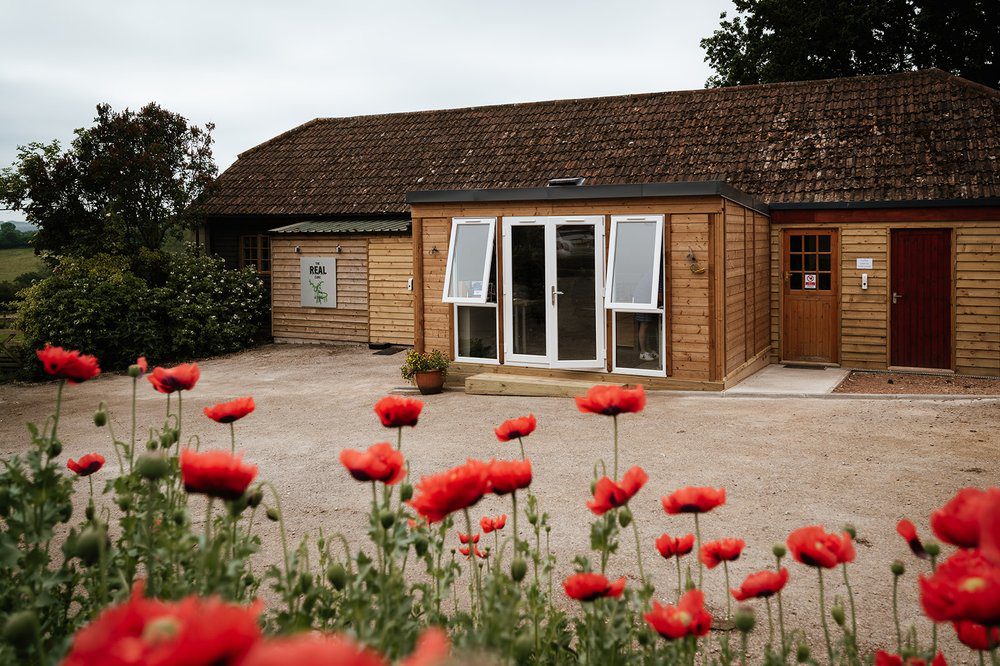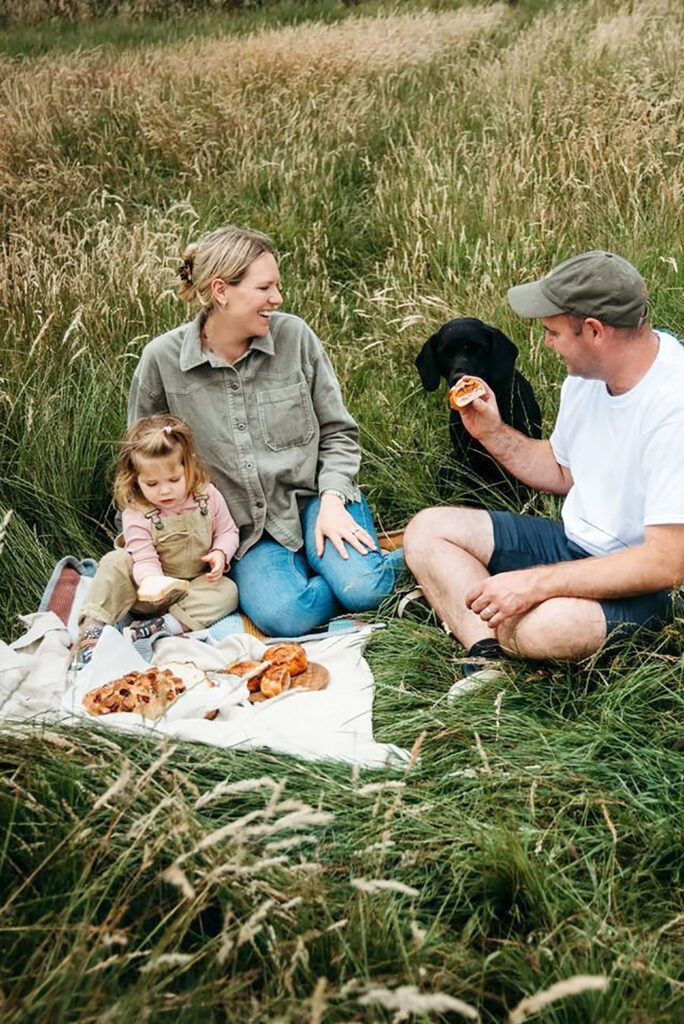Fanny Charles talks to James and Lucy Smart, who are celebrating ten years of running one of this country’s finest charcuterie businesses

‘It is easy to make good charcuterie once,’ says James Smart, founder of The Real Cure. ‘It is much more difficult to do it week after week. Consistency is the key.’
And consistency – with creativity and rigorous sourcing of ingredients – has been key to the success of the North Dorset-based charcuterie business, which celebrates its tenth anniversary this September.
From the smallest beginnings – as a hobby for a country-loving ecologist returning from London to his family farm at weekends – to a national award-winning artisan producer, The Real Cure’s story is one of slow, organic development and steady growth, helped by a few grants. ‘We received LEADER [EU] grant funding for part of our expansion project, but apart from that we have never had any outside investment,’ says James.
Now he and his wife Lucy have a team of 12 – quite a significant number in a rural area like Hartgrove near Shaftesbury – producing a range of 15 charcuterie items. Venison is the core of the business but the range now also includes pork and beef products. ‘People are more familiar with pork salamis,’ says Lucy.
One of their best-sellers is still the sloe and garlic venison salami which was their first product, using sloes they foraged from their local Blackmore Vale hedges. More recent successes and customer favourites include the chefs’ favourite, nduja (a spicy spreadable pork sausage), Italian black truffle salami, which has two Great Taste stars, and the coppa (cured pig’s collar) which has won a coveted three stars.
As the business has grown, James and Lucy have had to source some of their ingredients from further afield – the wild venison (previously solely from Dorset) now includes wild sika, roe and fallow deer from across Britain. But local products and producers are still important. They include Dorset’s famous historic cheese for Dorset Blue Vinny Salami, and Purbeck Cider.

A passion for venison
James was studying ecology at university when he met Lucy. His first job was with Scottish Natural Heritage (now NatureScot) surveying and recording wildlife on a Site of Special Scientific Interest in Sutherland. Here, he learned about the environmental damage that can be caused by deer – and understood the necessity of managing the population of wild deer, which have no natural predators, to maintain the fragile balance on this ecologically-important and beautiful SSSI.
After a few years working in ski resorts in Austria and Switzerland, the couple moved to London, where Lucy worked for a big PR firm on food and drink brands like Bottlegreen, Magimix and Burts Potato Chips. James kept as close as possible to his rural roots, working at outdoor pursuits shop Farlows in Pall Mall.
During his time in the Highlands, James had developed a passion for venison and began experimenting with curing using a double-door fridge in the small garden of their Camberwell flat.
‘We used to come down at the weekend and make salami and other charcuterie and later we would sell it at the farmers market in Shaftesbury. I always wanted to come back to Dorset. What started as a hobby went out of control. Something had to give. We had to make a choice!’
City life was not what either of them wanted, and the idea that they could make a business of the charcuterie kept growing. ‘So we gave up the London jobs.’

After a rudimentary renovation of a farm workshop, they set to work with a tiny smoker, a table-top sausage stuffer, converted double door fridge … and plenty of trial and error.
Initially, the fledgling business was just James, Lucy and a friend, Amy. Lucy kept the family afloat by working for Osprey, the upmarket backpack company in Poole, and slowly the word spread that their charcuterie was exceptionally good. Demand grew. ‘The growth has been very organic,’ says Lucy.
Salt and time
Venison – particularly wild venison – is now more widely recognised for its health benefits (it is a very low-fat meat) and sustainability, in terms of managing herd numbers and the environmental balance across Britain, from the Scottish Highlands to the Purbecks.
The pork for the charcuterie is all free-range – ‘We pay massively over the odds to get proper free range pork,’ says James. They also insist on using high-quality natural bovine collagen casing and grind their own spices.
‘We don’t buy any pre-mixed spices. Everything is done from scratch. We genuinely don’t cut any corners. The quality of our products has to justify our prices. We are proud of what we make.’
Sustainability and animal welfare are very important to the Smarts, as they are to many artisan producers and family farmers. They are concerned by the impact of recent reports criticising the environmental damage of meat production and the claimed benefits of moving to a plant-based diet. They take great care in the selection of their meat, only using the cuts they need, and outsourcing the butchery to ensure that the whole animal is used.
‘If you choose wisely, the UK probably has the best animal husbandry in the world,’ says James, who believes that there is an increasing push-back among consumers against including good British-produced meat within the global meat context. There is a lot of science in the production of top quality charcuterie, and it has a long history … part of food culture for centuries, if not longer. It would have started as an essential way of preserving meat, long before refrigeration existed and ensuring every part of the animal was used.
James explains: ‘The magic ingredient in charcuterie is salt, which binds with water molecules, limiting the amount of available water for bacteria to reproduce. This, in conjunction with air-drying, preserves the meat.’
The other essential ingredient is time. A cured ham can be hung for many months, even years, while its flavour improves. The famous Spanish Iberico ham is hung for up to three years. The Hartgrove Coppa is air-dried for four months, which gives it a deep and mature flavour.
The products, none of which include milk powder (milk is a common allergen), are all ambient and therefore don’t need refrigeration. There is a rigorous routine of testing to ensure product safety. ‘We spend a lot of money testing,’ says James. ‘We do monthly swabbing and there is stringent quarterly testing. We have to be doubly, triply, careful with ready-to-eat products.’
The Real Cure is SALSA-accredited – Safe And Local Supplier Approval is a robust food safety certification scheme for smaller food producers and suppliers. A recent development has also been a move to recyclable packaging – expensive, but one which fits well with James and Lucy’s commitment to sustainability.

Where to find The Real Cure products
From the early days at farmers markets and events like Screen Bites Food Film Festival, Shaftesbury Food Festival or the Dorset Food and Arts Festival at Poundbury, James and Lucy have steadily built up a wide range of retail outlets.
They used to attend a lot of events, which helped with cash flow in the early days, and you will still sometimes find them at a food festival, but their products are now widely available in the area – locally at Compton McRae in Semley, the Shaftesbury Deli, Udder Farm Shop on the A30 near East Stour and Gold Hill Organic Farm Shop at Child Okeford. Further afield you will find The Real Cure at the Dunning family’s famous Gloucester Services on the M5 and Tebay in Westmorland on the M6, and as far north as farm shops in Scotland, the Koze wine bar at Signals in Saltburn-by-the-Sea in North Yorkshire.
The Real Cure products are also served on cruise ships, sold at Fortnum & Mason and used both in recipes and served in cafes by the National Trust.
Covid, predictably, had a huge impact, and highlighted the importance of farm shops and online ordering from the website: ‘We don’t keep all our eggs in one basket,’ says James.





